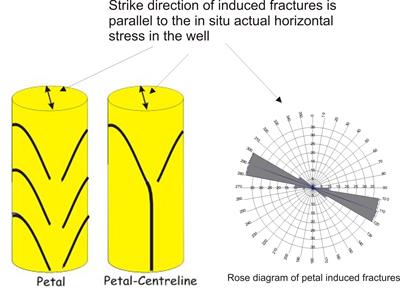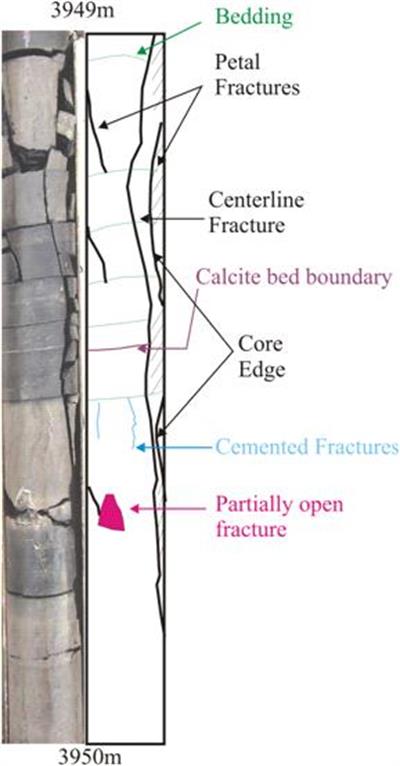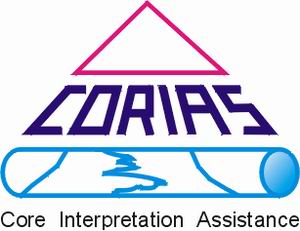Corias - Core Interpretation Assistance - 74, Allee de la Robertsau F-67000 Strasbourg
Phone: +33.3.88.24.24.00 - Mobile: +33.6.07.56.11.78 -
Mail: christian@corias.com
© Corias 2018 - All rights reserved.
Coring-induced fractures have recently become a reliable source of information on the orientation of the in-situ stress field. There are two important aspects to the use of coring-induced fractures for stress information. First, the coring-induced fracture must be distinguished from natural fractures, and second, a clear understanding of the fracture, its source, and its relation to drilling parameters must be made. The criteria for the distinction between artificial and natural fractures in core are not always obvious, and the possible mechanisms for the formation of many types of artificial fractures are poorly understood.
The significance of coring- and drilling- induced fractures lies primarily in the relationship of their orientation to the in-situ horizontal stresses. If induced fractures are found in oriented core, the true orientation of the in-situ stresses can usually be determined. If induced fractures are found in unoriented core but in conjunction with natural fractures, at least the relative angle between the natural fracture trend and a hydraulic stimulation fracture can be determined. If borehole image log data is subsequently acquired after coring, it may be possible to quantitatively resolve frac azimuths.


Kulander and others and Pendexter and Rohn listed recognition characteristics that differentiate induced from natural fractures in core, and a new and comprehensive volume on the identification and logging of core fractures has been published. Kulander and others determined that induced fractures are extensional in origin and describe several types of induced fractures in core. Only petal/petal- centerline and scribeline fractures are appropriate here.



